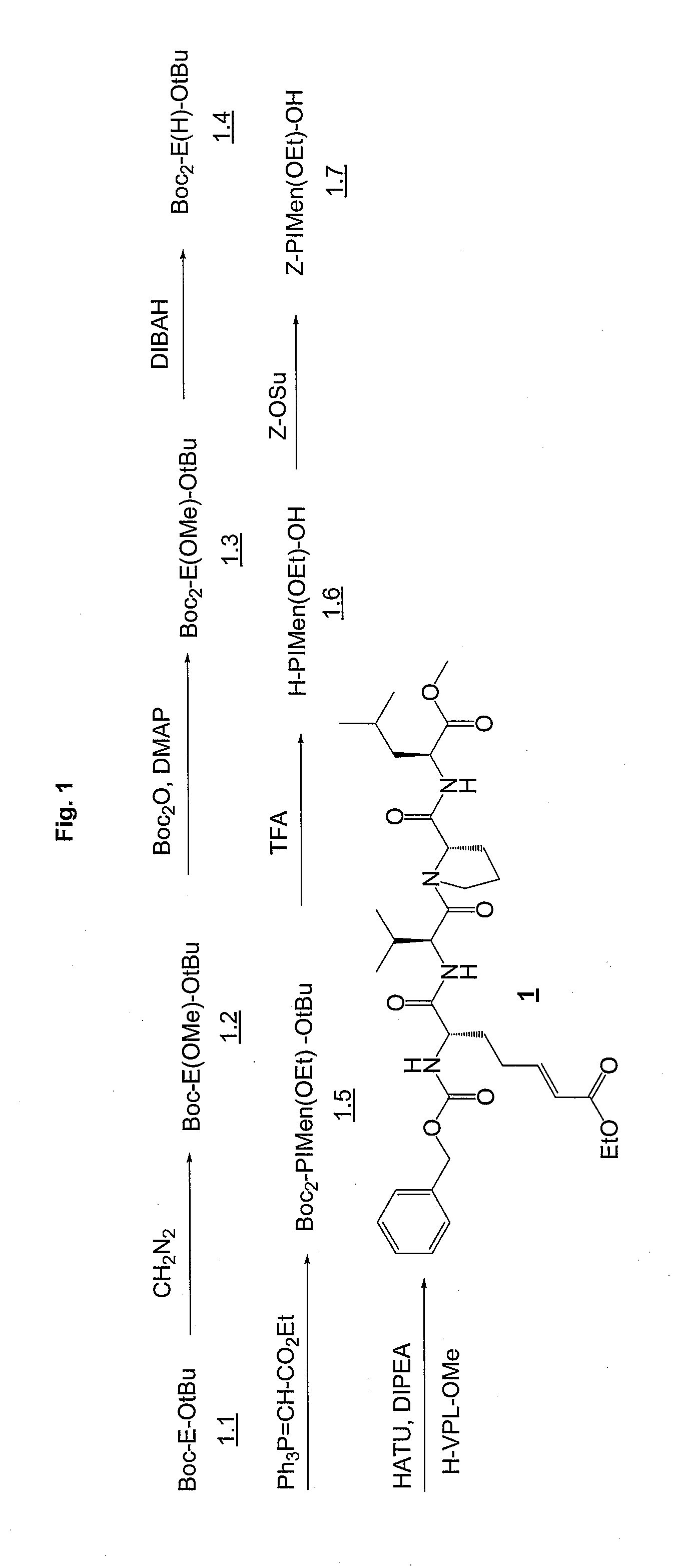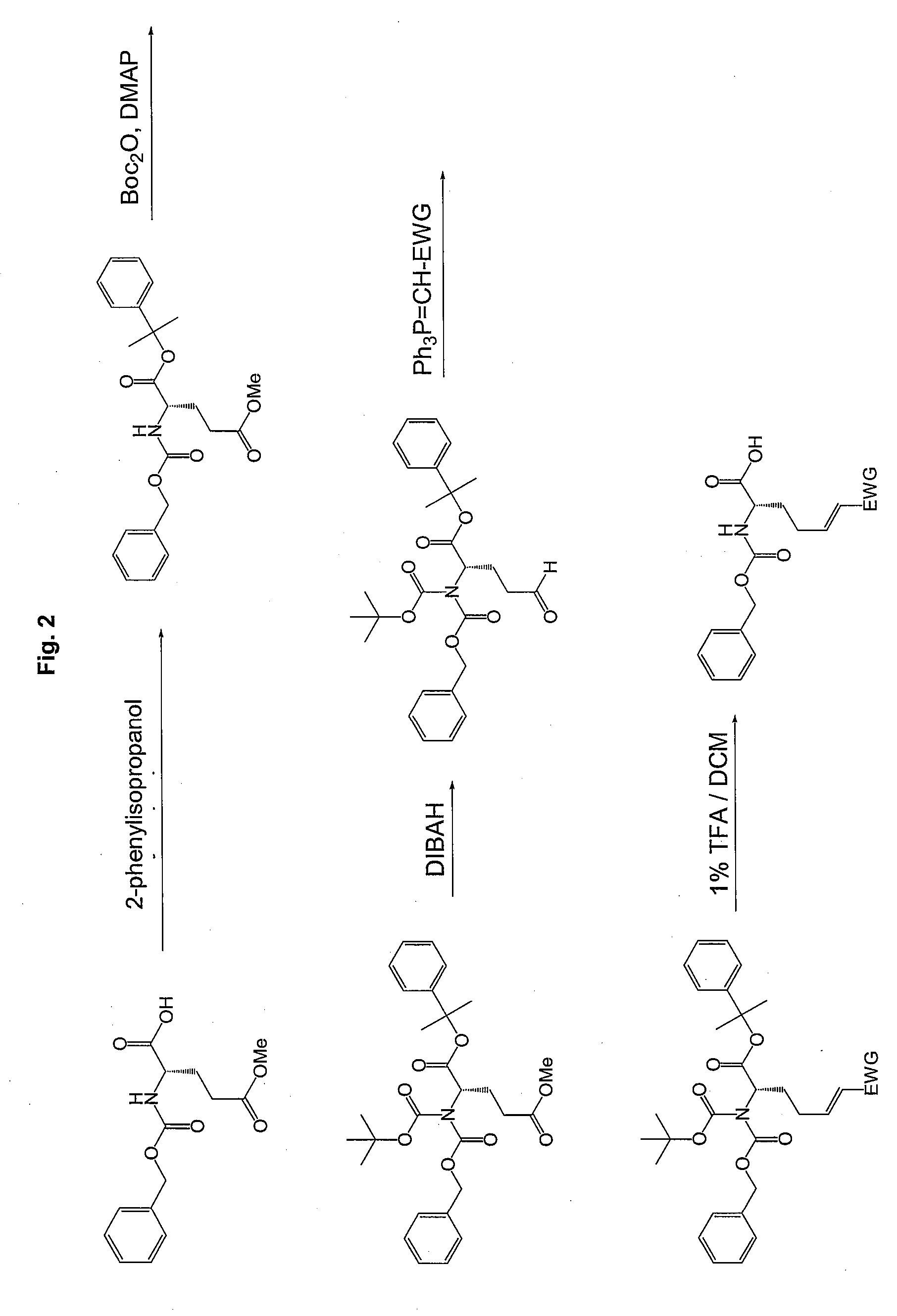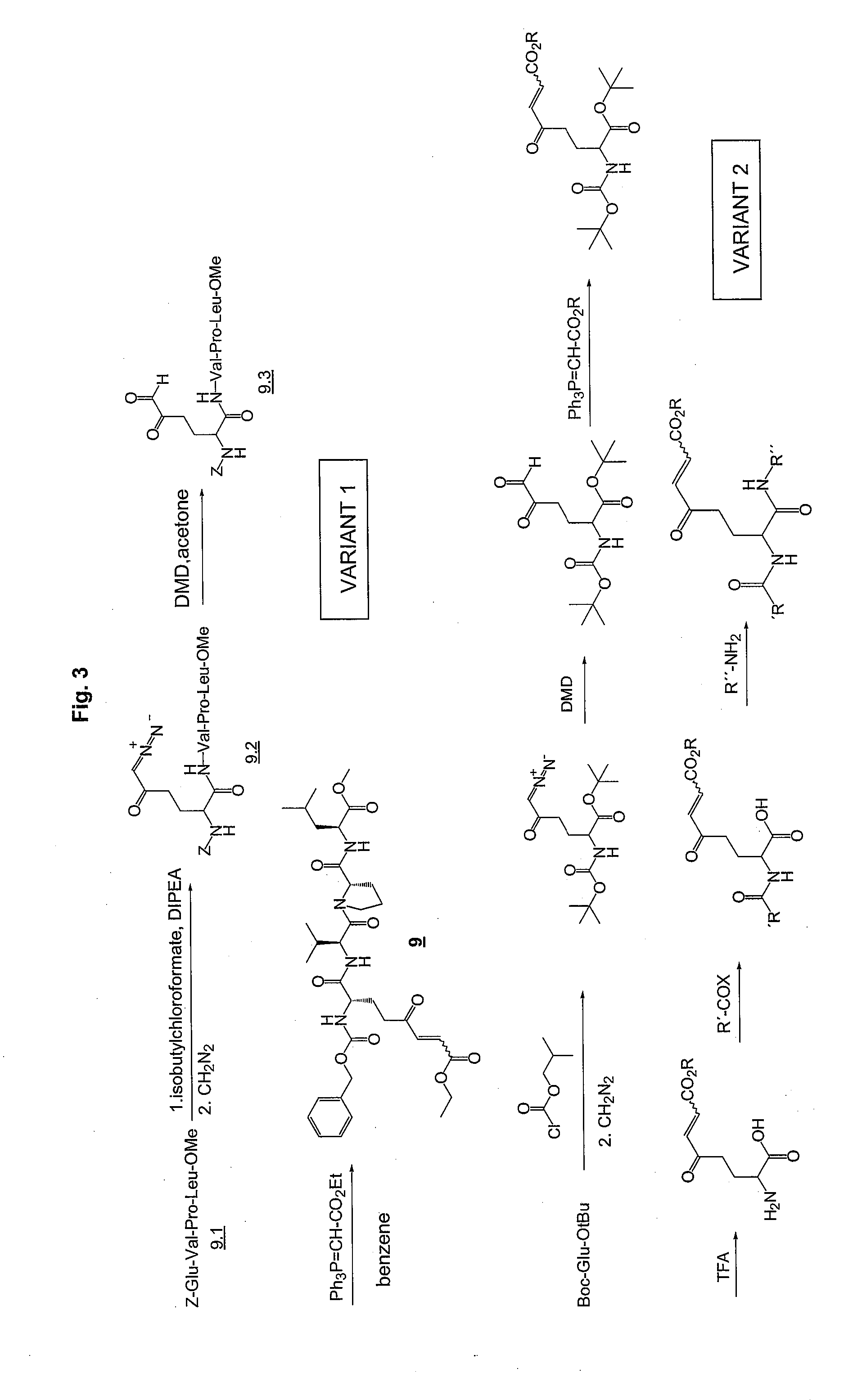Michael systems as transglutaminase inhibitors
a technology of michael systems and inhibitors, which is applied in the direction of antimycotics, dipeptides, peptide/protein ingredients, etc., can solve the problems of reducing absorption of nutrients, weight loss, appetite loss, etc., and achieves the effect of protecting groups
- Summary
- Abstract
- Description
- Claims
- Application Information
AI Technical Summary
Benefits of technology
Problems solved by technology
Method used
Image
Examples
##psy example 1
Biopsy Example 1
[0257]Biopsies with a diameter of about 2 mm were stored for a maximum of 30 min in ice-cold PBS after removal from the lower duodenum of patients suffering from coeliac disease. The single biopsies were transferred into the cavities of a 24-well cell culture dish and coated with 500 μl of Trowell T8 medium.
[0258]For preincubation, the transglutaminase inhibitor (1) in a final concentration of 5 μM was added to the biopsies and they were incubated for 30 min at a temperature of 37° C. in the incubator under gassing with CO2 (5%). Subsequently, stimulation with gliadin after peptic-tryptic digest (PT gliadin) used in a final concentration of 1 mg / ml was performed. PT gliadin was produced as described by Wieser and Belitz (Wieser H and Belitz HD (1992), Z Lebenm Unters Forsch 194: 229-234). The treatment with the proteases pepsin and trypsin simulates the digestion in the gastrointestinal tract. Thus the resulting gliadin peptides correspond to those which occur in the...
##psy example 2
Biopsy Example 2
[0262]Biopsies were cultivated and treated as described in biopsy example 1. After 24 and 48 hrs, 50 μl samples were taken both from the biopsy stimulated with PT gliadin and from the biopsy preincubated with inhibitor (1), which subsequently was also stimulated with PT gliadin and the samples were analyzed by means of an interferon-γ Elisa. A very high interferon-γ value of 653 pg / ml could already be measured in the biopsy stimulated with PT gliadin after 24 hrs, which value increased to 1177 pg / ml after 48 hrs. In the biopsy preincubated with inhibitor (1), the interferon-γ value measured after 24 hrs was only 86 pg / ml, and after 48 hrs only 426 pg / ml, despite the stimulation (see FIG. 20).
Synthesis of Required Peptide Sequences:
[0263]Standard methods are used for the synthesis of the non-modified peptide sequences. Generally, all methods known in literature can be used for peptide synthesis. (see also: Bodanzky M, Bodanzky A., The practice of peptide synthesis, Sp...
embodiments
S)-2-[((S)-1-{(E)-2R,5S)-2-(4-fluorobenzyl)-9-methansulfonyl-5-[(5-methyl-isoxazol-3-carbonyl)-amino]-4-oxo-non-8-enoyl}-pyrrolidine-2-carbonyl)-amino]-4-methyl-valeric acid methyl ester (compound 5.3.b)
[0643]
[0644]750 mg [(1S)-1-[(4R)-4-(4-fluoro)-benzyl-5-oxo-tetrahydro-furane-(2R)-2-yl]-4-(tert-butyl-dimethylsilanyloxy)-butyl]-carbamide acid-tert-butyl ester (5.3.1, see scheme 14, prepared according to Haug et al., Org. Lett., 2004, 6, 4783-4786, 1.51 mmol) are dissolved in 20 ml THF and 759 mg H-Pro-Leu-OMe (3.14 mmol) are added. The reaction batch is adjusted to pH ˜11 by adding DIPEA and heated to 40° C. for four hours. The solvent is removed under vacuum and the resulting oily residue is taken up in 200 ml ethyl acetate. The organic phase is washed with NaHCO3 solution and saturated NaCl solution and dried over Na2SO4. 1.0 g od the crude product (5.3.2) are obtained which can be used for further conversions without additional purification.
[0645]To a solution of 1 g 5.3.2 (1.3...
PUM
| Property | Measurement | Unit |
|---|---|---|
| structure | aaaaa | aaaaa |
| electronegativity | aaaaa | aaaaa |
Abstract
Description
Claims
Application Information
 Login to View More
Login to View More - R&D
- Intellectual Property
- Life Sciences
- Materials
- Tech Scout
- Unparalleled Data Quality
- Higher Quality Content
- 60% Fewer Hallucinations
Browse by: Latest US Patents, China's latest patents, Technical Efficacy Thesaurus, Application Domain, Technology Topic, Popular Technical Reports.
© 2025 PatSnap. All rights reserved.Legal|Privacy policy|Modern Slavery Act Transparency Statement|Sitemap|About US| Contact US: help@patsnap.com



